AMD’s GTX 560 Ti Counter-Offensive: Radeon HD 6950 1GB & XFX’s Radeon HD 6870 Black Edition
by Ryan Smith on January 25, 2011 12:20 PM ESTPower, Temperature, & Noise
As was the case with gaming performance, we’ll keep our running commentary thin here. The Radeon HD 6950 1GB is virtually identical to the 2GB card, so other than a few watts power difference (which can easily be explained by being an engineering sample) the two are equals. It’s the XFX Radeon HD 6870 Black Edition that has caught our attention.
| Radeon HD 6800/6900 Series Load Voltage | |||||
| Ref 6870 | XFX 6870 | Ref 6950 2GB | Ref 6950 1GB | ||
| 1.172v | 1.172v | 1.1v | 1.1v | ||
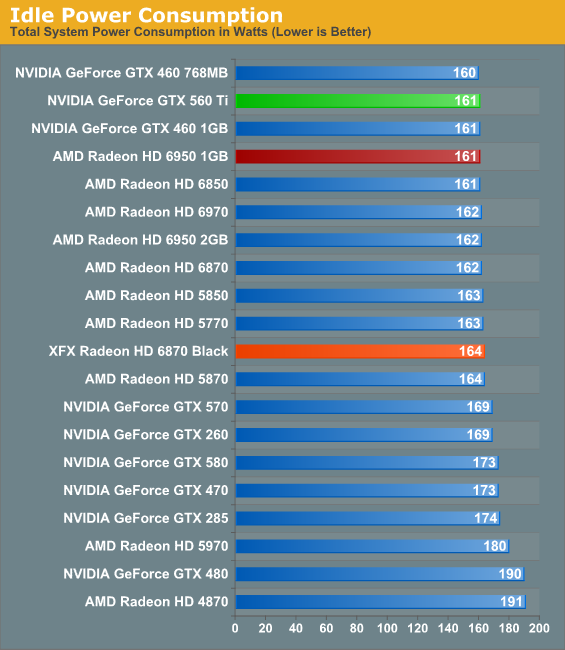

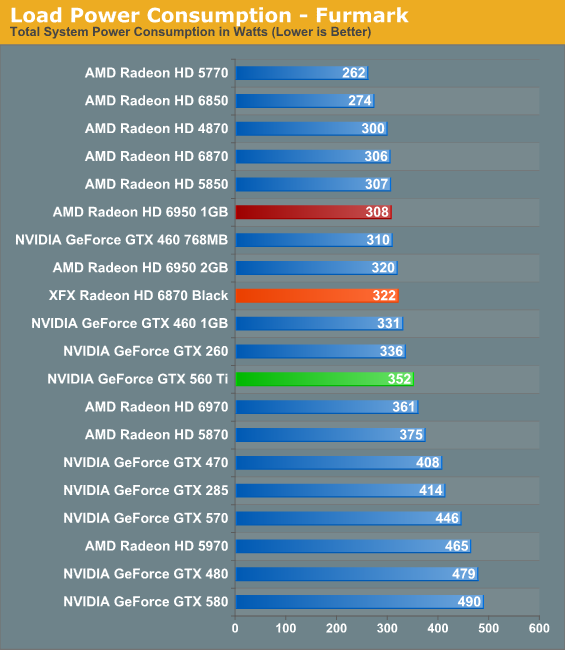
While the XFX 6870 has the same load voltage as the reference 6870, between the change in the cooler and the higher core and memory frequencies power usage still goes up. Under Crysis this is 11W, and under FurMark this expands to 16W. Unfortunately this factory overclock has wiped out much of the 6870’s low power edge versus the 6950, and as a result the two end up being very close. In practice power consumption under load is nearly identical to the GTX 460 1GB, albeit with much better gaming performance.
Meanwhile this is one of the few times we’ll see a difference between the 1GB and 2GB 6950. At idle and under Crysis the two are nearly identical, but under FurMark the 1GB reduces power consumption by some 12W even with PowerTune in effect. We believe that this is due to the higher operating voltage of the 2Gb GDDR5 modules AMD is using on the 2GB card.
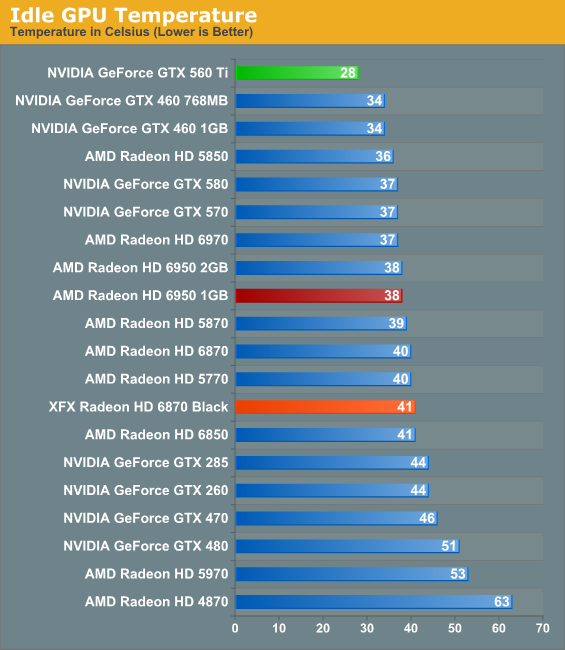


As far as temperatures go both cards are in the middle of the pack. The vapor chamber cooler on the 6900 series already gives it a notable leg up over most cards, including the XFX 6870. At 41C the XFX card is a bit warm at idle, meanwhile 78C under load is normal for most cards of this class. Meanwhile the 6950 1GB and 2GB both perform identically, even with the power consumption difference between the two.
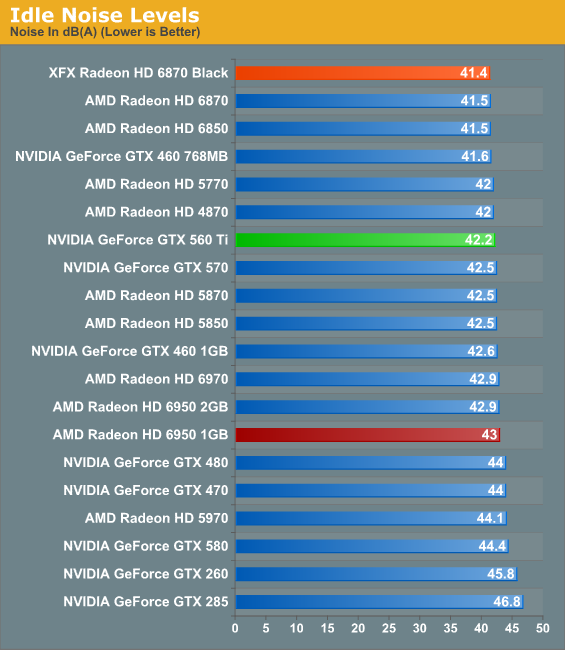
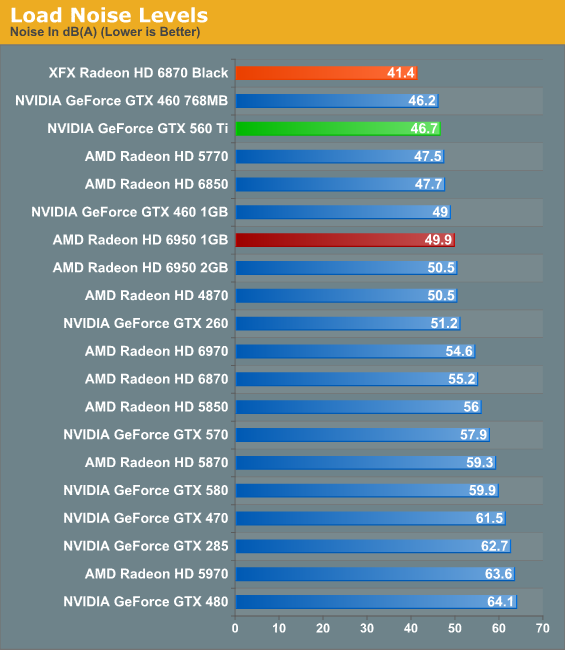
Last but certainly not least we have our noise testing, and this is the point where the XFX 6870 caught our eye. The reference 6870 was an unremarkable card when it came to noise – it didn’t use a particularly advanced cooling design, and coupled with the use of a blower it ended up being louder than a number of cards, including the vapor chamber equipped Radeon HD 6970. The XFX 6870 reverses this fortune and then some due to XFX’s well-designed open-air cooler. At idle it edges out our other cards by a mere 0.1dB, but the real story is at load. And no, that’s not a typo in the load noise chart, the XFX Radeon HD 6870 Black Edition really is that quiet.
In fact at 41.4dB under load, the XFX 6870 is for all intents and purposes a silent card in our GPU testbed. Under load the fans do rev up, but even when doing so the card stays below the noise floor of our testbed. Compared to the reference 6870 we’re looking at just shy of a 14dB difference between said reference card and the XFX 6870, a feat that is beyond remarkable. With the same warning as we attach to the GTX 460 and GTX 560 – you need adequate case cooling to make an open-air card work – the XFX Radeon HD 6870 Black Edition may very well be the fastest actively cooled quiet card on the market.
Meanwhile for the Radeon HD 6950 1GB and 2GB, we’re once again left with results that are nearly indistinguishable. Under load our 1GB card ended up being .6dB quieter, an imperceptible difference.










111 Comments
View All Comments
recon300 - Tuesday, March 29, 2011 - link
I haven't seen this question asked yet, so I'm hoping one of you may have the answer. I have noticed that the XFX 6950 is now available with the same dual-fan 3-pipe vapor chamber heatsink setup as is found on their 6870 Black Edition. They literally look identical. I'm wondering if anyone can confirm whether they also share the same acoustic properties... in other words, the XFX 6870BE (as reported by AnandTech) has an idle and load rating of 41.4dB. I wonder if the 6950 has identical (or close) acoustics. Because if the 6950 is as quiet as the 6870BE, I think I'll go with the 6950. Thanks.